HONDA EXPRESS SR (NX50)
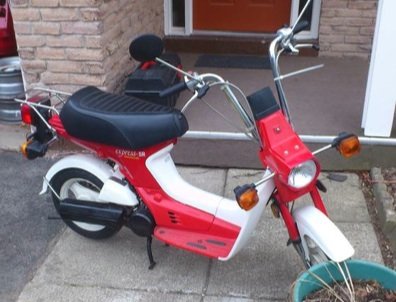
Model Overview
While not employing all the traditional characteristics of a modern scooter, the Express SR used enough of them (electric start, oil injection, auto-choke, CVT, plastic panels) to become arguably the first modern scooter sold in North America. All it lacked was side panels over the engine, under seat storage and a full height leg shield. The Express SR debuted for 1981 in both the USA and Canada and lasted just two years, with Honda’s Aero 50 taking over for 1983. Honda’s decision to switch to the Aero line was likely due to the impressive overseas success of that model when it was released a couple years prior. Both Honda and Yamaha were enjoying strong demand for their modern scooter designs by 1983 and thus the decision was made to abandon mopeds all together.
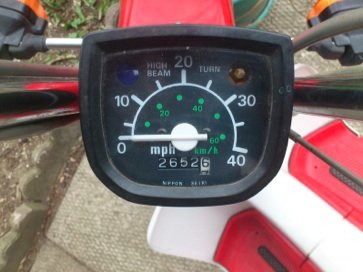
The NX50 differed from the Express mopeds (Express, Express II, Urban Express) by offering a full step thru frame plus a floorboard area for the riders feet (instead of pedals or pegs). The Express SR also launched the ‘modern scooter’ era with its CVT transmission, electric start, 12 volt electronics, auto-choke and oil injection. Honda’s “V-Matic” CVT was first deployed in the Express SR and would go onto play an important role in Honda scooters for decades. Electric start and 12 volt electronics also debuted in North America for the first time in a 50cc with the Express SR. The 1980 Express II moped was the first 50cc with auto-choke, but most of these other innovations were new with the Express SR and then trickled down to the Urban Express and Urban Express Deluxe mopeds the following year.
Internationally (UK, Japan et al) the Express SR was sold as the Honda Caren (1980 – 1983), not to be confused with Honda’s 3 wheeled 50cc moped/car/oddity of the same moniker.
Motor
Providing propulsion for the Express SR was a 50cc, 2-stroke motor with a horizontal layout. This motor was radical for its time with the aforementioned list of impressive innovations (CVT, oil injection, auto-choke). This motor was capable of 35-40mph when in good running form. In the three decades that have elapsed since the SR was in showrooms, some parts (ie. drive belts) have gotten scarce and the years have taken their toll on other parts – so not too many examples are capable of better than 30-35mph these days. Your best bet for a replacement drive belt is one from Gates (belt # 9290) which fits nicely.
The Express SR was only offered in one version. There wasn’t a moped restricted (30mph) or ‘Iowa’ restricted (25mph) version. If you’re looking for parts, Honda used this same motor in Urban Express Deluxe (NU50) but not in any of the other Express mopeds. If you’re looking for more speed, 70cc big bore kits from other late 70’s Honda mopeds will bolt on. Be aware though that you’ll need to adjust the carb to get reliable use of these kits and modifying the exhaust and gearing is key to getting the full potential.
 Design and Amenities
Design and Amenities
By scooter standards the Express SR was a fairly minimalist design. There was no glovebox up front, nor did Honda engineer any storage under the seat. The latter space was fully occupied by the separate oil and gas tanks. The former contained just a helmet lock. Quite uniquely, the Express SR gas tank sported a fuel gauge mounted directly on top – and thus out of sight under the seat.
To take some of the sting off the lack of enclosed storage, Honda did include a white metal basket located on the front of the scooter as a standard feature.
While Honda touted this scooter as being suited for beginners, the automatic start and oil injection features made the scooter a lot nicer for anyone to live with. Honda also included a kick start for those occasional times when a dead battery presents a challenge.
 Discussion
Discussion
Compared to the modern scooters that would follow, the Express SR enjoyed relatively modest sales. Nice examples are uncommon but not unheard of. Aside from the lack of enclosed storage and some difficult to find parts, this scooter is still a neat little machine that can be both practical and a blast to ride. If you come across one that has been reasonably well taken care of then you could easily enjoy years of reliable use once you sort out any kinks from it being stored for long periods.
The other neat thing about the Express SR is the role it played in the history of scooters. It’s quite a unique machine – a true ‘missing link’ in the evolution of modern scooters. It’s great to see people continuing to maintain and enjoy these vintage Honda’s.
Pros:
- Neat part of scooter history
- Unique moped/scooter looks
Cons:
- No enclosed storage
- Parts are getting scarce
Links:
Express SR Service Manual – Great tech info for working on your Express
Express SR Brochure – Nice Honda Brochure from 1981
MotorscooterGuide Forums – Visit the forum to chat about your scoot.
Colors:
- 1981: Monza Red, Angel Blue
- 1982: Monza Red, Angel Blue
Key Specs: 1981 – 1982 Express SR
- Engine: 49cc air cooled, single cylinder, 2-stroke
- Compression: 7.3:1
- Bore x Stroke: 40.0mm x 39.3 mm
- Spark Plug: BP5HS
- Transmission: Honda V-matic variable ratio with automatic clutch
- Ignition: Capacitor discharge
- Starter: Electric
- Final Drive: V-Belt
- Length: 61.7”
- Width: 24.4”
- Wheelbase: 43.1”
- Seat height: 28.1”
- Dry weight: 125.7 lbs
- Weight capacity: 180 lbs
- Fuel Capacity: 1.0 gallon (including 0.2 gallon reserve)
- Wheels: 2.75-10 (Front and Rear)
- Front Suspension: Telescopic fork, 50mm travel
- Rear Suspension: Single shock, 39mm travel
- Brakes: Drum / Drum

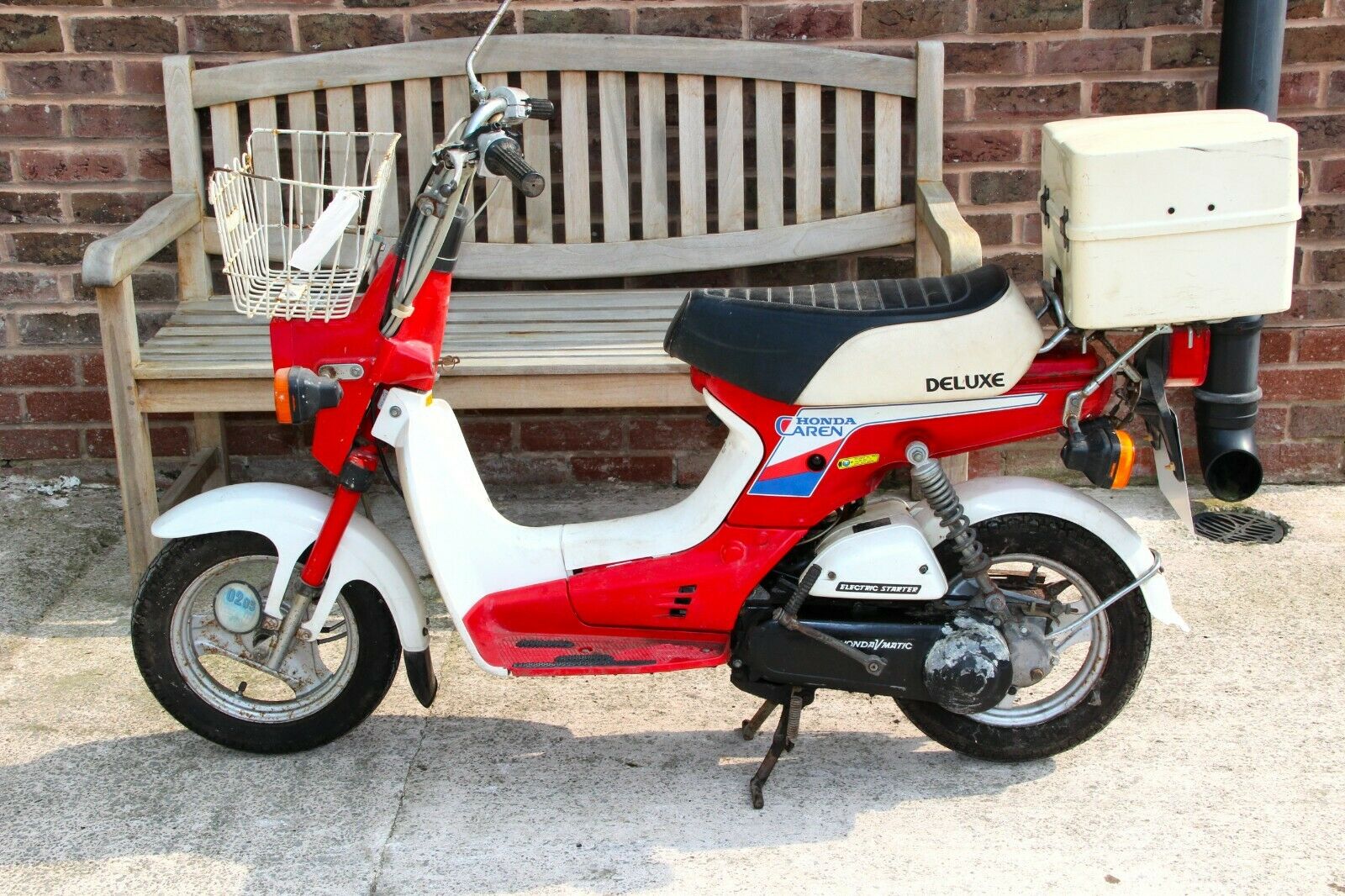
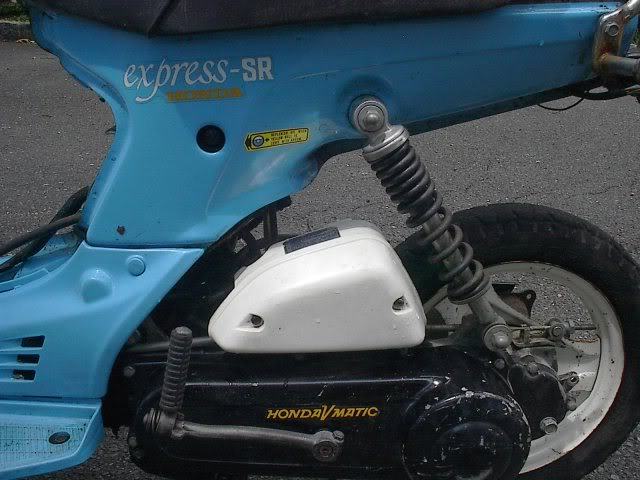
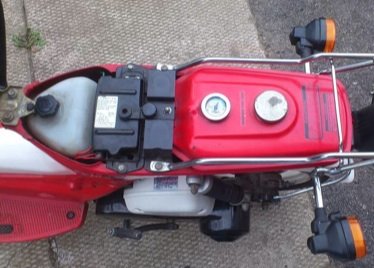 Design and Amenities
Design and Amenities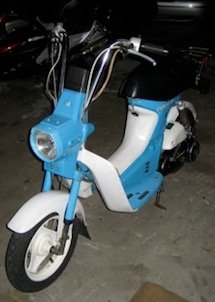 Discussion
Discussion